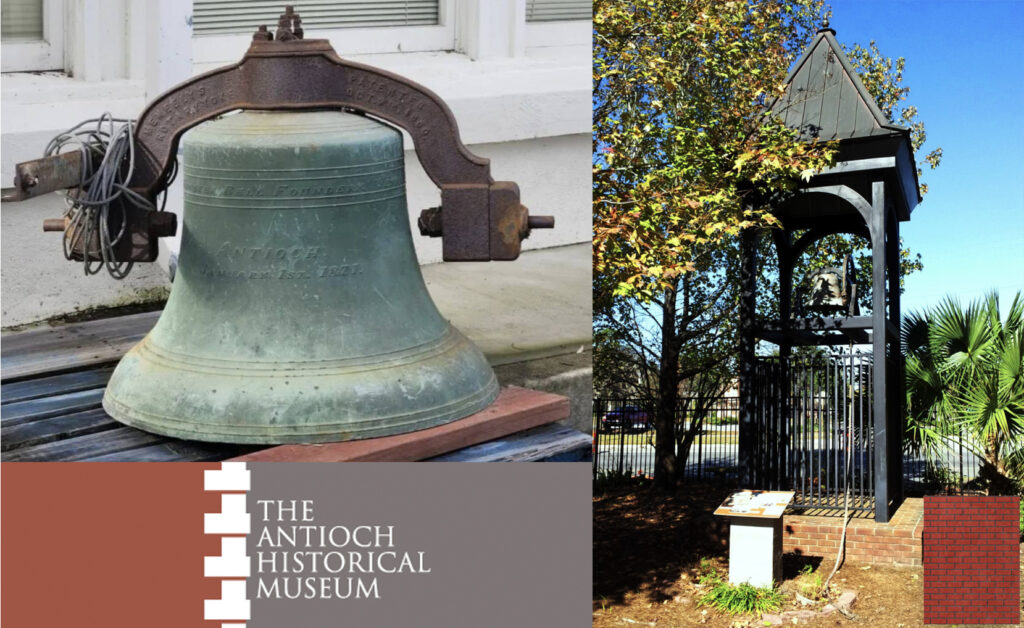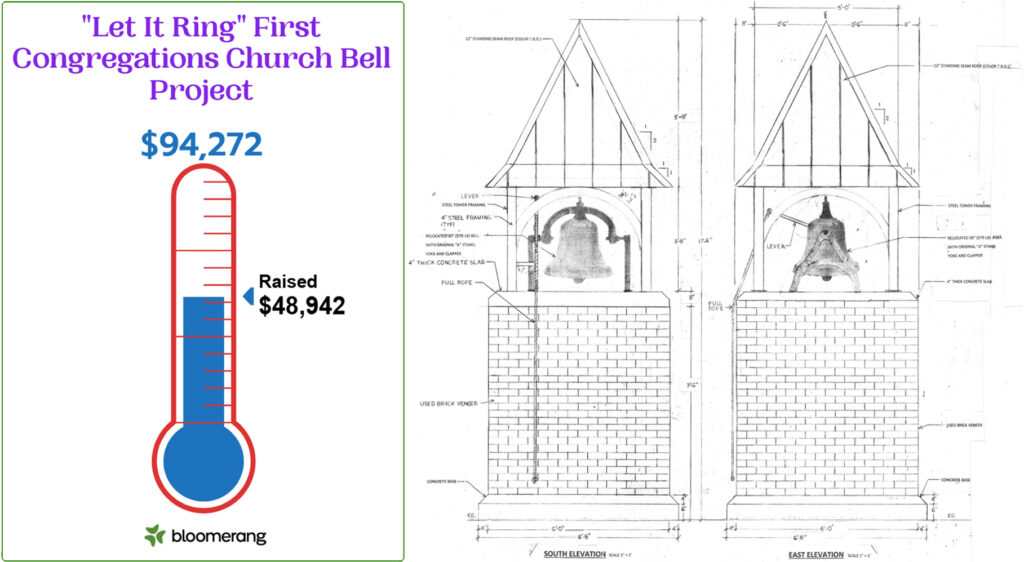Archive for the ‘History’ Category
Antioch Independence Day Parade sign-ups open until June 23
Wednesday, June 11th, 2025
By Antioch Parks & Recreation Department
City of Antioch! Kick off the Fourth of July Celebration with our Annual Parade! It will be held on W. 2nd Street in historic, downtown Rivertown.
Share your celebratory spirit with floats, performances, and special appearances!
Last call for sign-ups are June 23rd! for more info visit our website: antiochca.gov/recreation/parade-entry-info
City of Antioch to hold annual Juneteenth Celebration June 19
Monday, June 9th, 2025
Williamson Ranch Park | 4pm-8pm | Cost: FREE
Featuring performances by headliner Grammy-nominated Shanice and Golden State Warriors performance band Universal Soul
Celebrate freedom, culture and community right here at home! Join us for Antioch’s fourth annual Juneteenth Celebration on Thursday, June 19th at Williamson Ranch Park from 4-8 PM, featuring a special headlining performance by Shanice! Enjoy live music, local vendors, food, and powerful moments of history and heritage. From history booths to rides and games to domino and double dutch tournaments, there will be plenty to keep the entire family entertained! Don’t forget to bring your lawn chairs and blankets!

Shanice Wilson is a Grammy-nominated American singer, songwriter, record producer, actress, and dancer. She had the Billboard hit singles “I Love Your Smile” and “Silent Prayer” in 1991 and “Saving Forever for You” in 1993. In 1999, Shanice scored another hit song with “When I Close My Eyes“, which peaked at No. 12 on the Billboard Hot 100 chart. She is recognized for her coloratura soprano voice and her ability to sing in the whistle register.[4]
Shanice was age nine when she appeared in a Kentucky Fried Chicken commercial with jazz vocalist Ella Fitzgerald.[4] In 1984, she was part of the regular cast in the first thirteen episodes of the children’s program Kids Incorporated. Shanice competed on Star Search at age eleven and later signed with A&M Records.[5]
In addition to singing, Shanice is also an actress, first appearing in “Rock Enroll”, a season five episode of Family Matters.[12] In 2001, she made a guest appearance as a singer on her husband Flex’s TV show, One on One. That same year, she starred in the TV movie One Special Moment,[13] an adaptation of Brenda Jackson‘s 1998 novel of the same name.
In 1997, Shanice became the first Black performer to star in the role of Eponine in the musical Les Misérables on Broadway.[14] In 2011, she joined Niecy Nash and Frenchie Davis for the 21st Annual “Divas Simply Singing” HIV/AIDS charity event.[15] Shanice and her husband, Flex, also starred in the reality show Flex & Shanice, which premiered on the Oprah Winfrey Network on November 1, 2014.
She is currently starring as Michelle Obama in the Broadway musical “44,” the Obama musical, and has her own lipstick line, called Smile by Shanice.
She is currently performing all over the USA and the world and working on new music as well.

Universal Soul
Universal Soul is one of the Golden State Warriors’ favorites (that plays during home games at Chase Center in San Francisco). The band’s name is inspired by their desire to provide music that resonates with all GSW audiences and fans everywhere.
The band consists of four dynamic musicians: Dante “Taz” Roberson, Eddie Minniefield, Michael “Tiny” Lindsay, and George Epps. Their substantial experience and versatility have allowed them to tour and share the stage with artists Eric Benet, Cameo, Gavin DeGraw, Anthony Hamilton, Joe, Kem, Alicia Keys, John Mayer, Shawn Raiford, Tank, Too Short, and Tony! Toni! Tone! and many more. The band’s musical influences and style are infused with funk, jazz, pop, rock, and classic R&B. This unique fusion creates a “Universal” sound that is both nostalgic and fresh.
The band consists of four dynamic musicians: Dante “Taz” Roberson, Eddie Minniefield, Michael “Tiny” Lindsay, and George Epps. Their substantial experience and versatility have allowed them to tour and share the stage with artists Eric Benet, Cameo, Gavin DeGraw, Anthony Hamilton, Joe, Kem, Alicia Keys, John Mayer, Shawn Raiford, Tank, Too Short, and Tony! Toni! Tone! and many more. The band’s musical influences and style are infused with funk, jazz, pop, rock, and classic R&B. This unique fusion creates a “Universal” sound that is both nostalgic and fresh.
Their high-energy performances and ability to connect with the crowd have made them a fan favorite at Chase Center. They have become an integral part of the overall game day experience for GSW fans, adding an extra level of excitement and entertainment to each home game. Universal Soul’s dedication to providing top-notch musical entertainment for GSW fans has solidified their reputation as one of the premier performance bands in the NBA. With their infectious energy and undeniable talent, Universal Soul continues to captivate audiences and enhance the overall game day experience for GSW fans.
Thank you to our sponsors: Republic Services, All Phase Brokers, Metz Entertainment Group, Ironworkers Family Health and Marathon Health.
Learn more about Antioch’s Juneteenth Celebration when you visit antiochca.gov/juneteenth.
Paid advertisement
Antioch Historical Society raising funds for 150-year-old church bell display at Museum
Wednesday, May 21st, 2025
“Ring it loud! Ring it proud! Be part of Antioch’s history!”
During Society’s 50th and Museum’s 25th Anniversaries
By Allen D. Payton
The Antioch Historical Society is at it again with another project for the grounds of the Museum. This time they’re raising funds to restore and locate a display of the historic First Congregational Church bell, one of the oldest artifacts in the city.
The effort is being led by Past Board President Dwayne Eubanks and Tom Menasco, a co-founder of the Sports Legends wing and leader of the successful fundraising effort for the Red Caboose display.
Menasco is serving as the marketing and fundraising manager, Director Stan Davis and Ron Bass are serving as construction managers, Eubanks shared.
According to the Historical Society, the bell “was heard more than 150 years ago by early church members, including Antioch’s founders Rev. W.W. Smith and Captain George W. Kimball. It was heard by the church sexton, Thomas Gaines, the first known Black settler in Antioch.”
When reached for comment, Eubanks said, “The church bell is very significant to Antioch as it goes back to the time when the city was incorporated and was heard by people including the first Constable and Mayor, Roswell Hard, William Wiggins Smith, Thomas Gaines, and Adelia Kimball, the community’s first teacher.”
“We’re building a custom bell housing. We paid a company that specializes in designing bell towers back in 2022. But we had to put the plans on the shelf for a few years due to COVID.”

Antioch resident Joseph Zamora, a member of the First Congregation Church, donated the bell.
“It was in his backyard under a tarp. It’s 700 lbs.,” Eubanks stated.
“We’re hoping the bell will help unite old Antioch and new Antioch. To me, personally, it’s a symbol of unity,” he added.
They’ll build the tower, display the bell, “and it’s going to ring,” Eubanks exclaimed.
Asked how much the Society is raising for the project, he said, “The construction estimate was around $96,000 and we’ve raised $48,000. Part of that came out of our budget. That includes profit and labor. But we’re taking that out as we may get in-kind services and materials that will cut that balance down.”
“The City gave us a civic enhancement grant and waived the construction permit fee,” he shared.
“We’re hoping to put this bell and tower in this year as it’s the 50th Anniversary of the Historical Society and 25th Anniversary of the museum in the former Antioch High School and fire department building,” Eubanks mentioned.
“Ring it loud! Ring it proud! Be part of Antioch’s history!Leave a legacy for your children and grandchildren to see, ring, and enjoy. Let’s hear it ring again! Become a sponsor today and your name will be permanently inscribed on the exhibit,” the Society shared on their Facebook page.
To donate online, visit their website at: https://antiochhistoricalmuseum.org/donations/ or see the flyer below. The Museum is located at 1500 W. 4th Street and is open Wednesdays and Saturdays from 1:00 to 4:00 p.m. For more information call (925) 757-1326.

Memorial Day Weekend events in Antioch May 24-26
Tuesday, May 20th, 2025
MLB Day at Antioch Sports Legends Hall of Fame April 12
Friday, April 11th, 2025
Meet former local professional baseball players
Enter to win tickets to an Oakland Ballers baseball game
The Antioch Sports Legends Hall of Fame is holding its MLB day on Saturday April 12th from 1:00pm – 4:00pm.
Come by to meet and speak with former MLB players from Antioch: Aaron Miles, Butch Rounsaville, Nick Pasquale and Manuel Bermudez.
Get your free photos and autographs! Enter to win four tickets to an Oakland Ballers baseball game to all who visit the museum! (must be 18 years or older to win)
We are located at 1500 W 4th Street on the bottom floor of the Antioch Historical Museum. It’s FREE to visit!
Antioch statue of father and daughter vandalized again, removed
Tuesday, April 8th, 2025
Depicted them watering City’s Official Flower; part of public art program
Former mayor, councilwomen who approved it in 1994 upset
By Allen D. Payton
Following damage and theft of the girl depicted in the “Hey Daddy, Look!” statue for a second time, the City of Antioch has announced it has removed the dad public art piece from its location on Lone Tree Way near James Donlon Blvd. The statue depicted the two holding a pail and watering a replica of the City’s Official Flower, the Antioch Dunes Evening Primrose, an endangered species that grows along the waterfront in the Antioch Dunes National Wildlife Refuge off of Fulton Shipyard Road.
The art piece was approved by the city council in 1994 at a cost of $150,000 and it was first vandalized in 2021. According to the City, “Toward the end of September 2021, Frostad Atelier Foundry in Sacramento was tasked with restoring this landmark statue due to vandalism (severing) of the dad’s hand and a watering pail. The restoration took approximately seven…months.”
“The patina, a green or brown film on the sculpture’s surface produced by oxidation over a long period, has also been restored as part of the process. Additionally, the installation of new primrose flowers has also been completed!”

A post on the City of Antioch’s Facebook page on Monday, April 7, 2025, reads: We’re saddened to share that one of Antioch’s cherished public art pieces — the “Hey Daddy, Look!” sculpture located on Lone Tree Way near James Donlon Blvd.— has been vandalized.
“Originally restored in 2022 at a cost of over $38,000, the bronze statue has stood as a symbol of joy and connection in our community. Sadly, on March 12, the City was notified that the statue of the little girl was stolen. Out of concern for further vandalism, City staff have since removed the remaining ‘dad’ statue for safekeeping.
“The Antioch Police Department has been notified, and a report has been filed. If you have any information or saw anything suspicious in the area, please contact Antioch PD at (925) 778-2441.
We know many residents loved and appreciated this piece of art. Please know that we’re actively looking into options for what comes next.
Let’s continue to look out for one another and our public spaces.”
Former Mayor, Councilwomen Upset with Vandalism
When reached for comment former Mayor Joel Keller, and Councilwomen Cathryn Freitas, Liz Rimbault and Mary Rocha, who voted to approve the statue, shared their frustration with the theft.
“I was an advocate for having public art be part of every subdivision and I was disappointed when I read that people had stolen a piece of public art that residents had paid for,” Freitas stated. “Nothing’s a free lunch. It’s just a shame.”
“They took the little girl to melt her down as bronze,” Rimbault posited. “That’s like when they were vandalizing the Cannery Lady Statue in Rivertown by stealing the plaques which were made of bronze. So, we replaced them with marble. One of them was cutup into several pieces and sold to a recycler but later recovered by the police. It’s now at the Historical Society Museum with the Cannery Lady display.”
“That was when Helen Meagher and Faye Curtis were heading up that effort,” she shared. “It was an entire art program that went up Lone Tree Way and came back down Hillcrest Avenue.”
“They included several mosaics on the wall on Hillcrest which used to get vandalized and were removed,” Rimbault continued. “Also, the silver sculpture (entitled, ‘Delta Moon’) at the (southeast) corner of Hillcrest and Lone Tree, the old man in the wagon pulled by a horse (entitled, ‘I Knew It Was Coming’ at Hillcrest and Laurel Road, which depicts him pointing at all the new people moving to town), the horses on the hill at Wild Horse Road (and Hillcrest, entitled, ‘The Spirit Rider of the Seasons’) the bears (on Hillcrest at Terrace View Avenue entitled, ‘Mother and Cub’) and the fountain (at the corner of Hillcrest and Deer Valley Road entitled either, ‘Elements’ or ‘Two Rivers’). Although, I don’t think that one was part of that art program.”
The City’s Art in Public Places program also included the blue lighted water drop, entitled simply, “Drop” at the entrance to Prewett Family Park where the Antioch Water Park is located, and the sculpture at the corner of Dallas Ranch Road and Rockspring Way possibly entitled either, “Delta Breeze” or “Delta Winds”.
“It’s just the state of the world, currently. Everybody’s hurting, thieves are running amok, we don’t have the police department at full strength and people are getting away with anything,” Rimbault added.
“It’s just too bad as it was an important part of Antioch’s past and future,” Keller stated. “Why people have to steal things it’s too bad. It’s part of what makes a city special, especially that particular statue. It was an uplifting statue and whoever stole it took that away from the public.”
Later, when reached for comment, Rocha said about the statue of the girl being stolen, “Oh, no. She was the cutest thing in it. She represented the future.”
“I’m sad. I go by there all the time,” she added.
See more of Antioch’s Public Art on the City’s website, here.
After 69 years Antioch’s Mac’s Old House restaurant to close June 22
Saturday, April 5th, 2025
Restaurant and property put up for sale
By Allen D. Payton
A 69-year-old Antioch institution and icon, Mac’s Old House, will close in June as owner and president Gary Noe and general manager and head chef Rick Cook have decided to throw in the dish towel and chef’s hat.
Locally famous for their dine-in, family-style prime rib and pasta dinners, as well as their very affordable cocktails, “The story of Mac’s stretches back to 1925 when Floyd ‘Mac’ McKinney built this house with his father. In 1956 he began to operate a bar out of a converted part of the home. He operated it for 17 years before selling it and retiring,” according to a report by onlyinyourstate.com. “The restaurant changed hands a few times after Mac, but today’s owner bought it in 1983.”
Noe and Cook, who have operated it on E. 18th Street, announced the closure in a post on Facebook Friday evening:
“It is with heavy hearts that we announce the closing of Mac’s Old House on Sunday, June 22, 2025.
We know this may come as a shock, but after 42 incredible years it’s time to hang up our hats. In 1983, Gary and Rick came together with a vision to create the Mac’s you know and love today. Gary purchased this old house with the dream of bringing Bertolas style to Antioch, and Rick, who spent over a decade at Bertolas in Oakland, joined him. We were welcomed with open arms and were a success from day one.
We have weathered recessions, a pandemic, and ever-changing times, and through it all, we have been fortunate to serve this community. We could not have done it without our loyal customers and our dedicated staff. This little house has served well over three million meals, and we are grateful for each and every one of you.

As difficult as this decision is, all good things must come to an end. Rick and Gary have dedicated more than half their lives to Mac’s—along with many of our staff. We are incredibly grateful for everyone who has been part of our Mac’s family over the years. Their hard work and loyalty is what makes Mac’s Old House so special.
We hope this gives you time to visit and enjoy Mac’s a few more times before we say our farewell. Your stories and memories mean the world to us, and we look forward to celebrating with the community that helped make Mac’s an iconic and loved institution.
There is still hope for the future—Mac’s Old House and the property are for sale, meaning it’s possible that Mac’s could live on with new ownership and management. For inquiries, please contact Tatiana Guzman, Chromata Real Estate at 925-783-2480 or tatiana@chromataRE.com.
Thank you all for being the most important part of our story.
With gratitude,
The Mac’s Old House Family”

Their menu also includes Extra Cut Prime Rib, Ribeye Steak, fresh Salmon and Red Snapper, Calamari Steak, Grilled Chicken Breast and Ground Round. Mac’s dine-in meals include hot baked bread, Minestrone soup, salad, pasta and fresh sauteed vegetables. See all of their menu at www.macsoldhouse.com and go get some while you still can!
























